In The Garden: Growing Legumes
- Black Eye Peas.. I forgot a basket.
- Black Eye Peas A Great Summer Pea
- Pigeon Peas A Beautiful Perennial Bush Legume
- Sugar Snap Peas A Delicious Legume
- Long Beans A Summer Pole Bean
Legumes are a family of plants that includes beans and peas, peanuts and clovers. The Florida native ground cover Perennial Peanut is a legume. The Pigeon Pea plant, though it is a perennial bush is a true legume, and it shares the characteristic of legumes that makes that plant extremely desirable in the garden. Remember alfalfa hay from The Lasagna Garden Mound recipe? Alfalfa is a legume too. Knowing that helps to explain it’s purpose in the lasagna garden mound it is a hay that is very high in nitrogen. Legumes are nitrogen builders. They are able to take nitrogen from the air and convert it into a usable nitrogen in the soil for themselves, for the organisms in the soil, and for future plants. Their leaves, flowers, roots and fruits are high in nitrogen. Most other families of plants can not fix nitrogen the way that legumes can, Legumes therefore earn the title of soil builders. The soil from which they come is ready for a plant that needs a lot of nitrogen. Most leafy plants like salad greens and cooking and juicing greens are nitrogen consumers, as well as tomatoes, and cucurbits, which are in general heavy feeders. Any plant that makes a green leaf needs nitrogen to do it.
Legumes do this amazing nitrogen fixing job with the help of a common soil bacterium which works with the plant to form nitrogen storage balls on the roots of the plant. These little balls can be observed if you care to dig a plant out of the ground. Digging and pulling should be done gently enough to avoid popping the little balls, or nodes as they are called, off of the root so that you can observe them. These nodes do not look the same as the root knot nematode. These nodes are individual detachable balls on the roots, they do not cause the root to be deformed, rather they help the plant. Your pea and bean plants will still make peas and beans even if this bacterium is not present in the soil, but the storage nodes help to boost production, and they are what makes the legume plant a great soil builder. Without the nodes the legume is still as good for the soil as any plant, but not as good as a legume with the nodes.
We never know if our soil has the nitrogen nodule forming bacterium present until after our legume plants have grown up some, and we can pull a plant out to look at the roots. To tip the odds in our favor seed companies offer a bean and pea inoculant so that you can add this as you are planting the seed. The bacterium present in this inoculant are Rhizobium leguminosarum viceae, and phaseoli and bradyrhizobium biovar sp.
The inoculant I buy comes sealed in a plastic bag. It is a fine dark powder. There are two recommended ways to add this to the seed. Just prior to planting the seed make a slurry of the powder and non-chlorinated water, roll the beans around in it so they are coated and plant them. The other way is to wet the beans and then shake the powder on them or roll them in the powder, and plant them. The way I handle the inoculant is to pour some of the powder out into a wide bowl, like a large butter tub, count out the exact number of beans I am going to plant (if I don’t know this number then I make the planting holes first, count them and then count the beans), drop the beans into the powder then I set my hose on mist and very lightly mist the beans and powder just enough that the powder coats the beans when I shake them around. If I hit it just right the beans don’t get wet, but the powder sticks. Usually the beans get wet, and once you have exposed your beans or peas to water they will change quickly so it is important to handle them as little as possible once they have been wetted and coated, and get them into the ground gently and quickly. Please remember, the inoculant is a bacterium; if you use chlorinated water to wet it you may kill it.
Once your bean or pea plants have given you the harvest you desire cut them down at soil level leaving the roots in the ground and let the leaves and stems fall to the soil as well, they too are packed with nitrogen for your future crops.
If you are growing a crop of peas just for the soil you should cut them down before they make peas. I am planting several types of legumes this summer. I have just cut down my sugar snap peas. I left the roots in the soil and the chopped up plants on the surface. I am following them with a crop of yard long beans. In other beds I am growing black eye peas, mostly for the peas, and peanuts for food also, but when I harvest the plants their leaves stems and roots will stay on the soil.
I got a package of cow peas, and I am growing those as a cover crop and for no other reason than to cover and fix the soil.
It is a good practice to always have some beans and peas growing in every garden each season.
In Illinois at the organic farm that provides organic food for the CSA in which my sister participates, they grow food for a few seasons in one field, and then put that whole area into clover and switch to another area just coming out of clover. Clover is also a Legume.
We can grow quite a few legumes here in the summer, so it is a great off season crop for us. What is so great about South Florida growing is that we have year round warmth, so we can run cover crops or green mulch crops through our entire summer season, put them down to the soil and cover them over for a few weeks in the fall and be ready to grow again in the winter or spring.
Many growers have forgotten about legumes as nitrogen fixers, or have forgotten how to use them to help build garden soil. This is invaluable information that all gardeners should posses, except that it is easier to buy a bag of fertilizer. The bag of fertilizer method is easier for sure, it takes less planning and foresight, but it is more expensive, destructive to soil, and is a potential pollution threat to our water ways. Legumes lock up nitrogen for future use. Plants know how to tease nutrients out of soil, and how to attract and make deals with bacteria, fungi, and protozoa for the nutrients they hold in their bodies. Growing legumes enriches the soil and the microbes in the soil with nitrogen that plants are able to use.
Legumes are also great food for people and great food for chickens. They are a good source of protein and mixed with a grain they make a complete amino acid chain, or complete protein which makes legumes a staple food for vegetarians.
Grow legumes, they are good for you and they are good for soil.
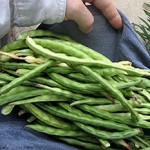
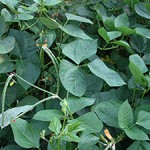
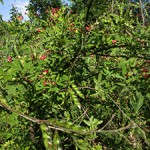
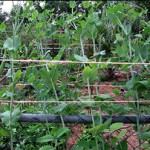
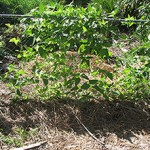

9 Responses
Great post. What else can i say?
FAscinating–I LOVE legumes…..
I love all legumes, too and am really interested in your blog. You always make tough-to-understand gardening issues, easy for us novices to understand.
Thanks for your comments Sara, Dorothy, and GPC.
Do you know of a place where I can buy bean and pea inoculant here in fort pierce?
Mike, I don’t know of any inoculant source here in town, but if you can not for some reason order from Johnny’s Seeds then I could increase the volume of my next order and sell you some of mine. I have one bag unopened in the refrigerator of you want to buy that one. Please call me. 772-465-8464
wow. I ‘ve bean stuffing myself witjh beans and rice all week and now I’m trying to grow them. they are such a trip to watch as they swell and unfold their little greenleafy hands and stretch themselves up toward the sky. The dude in the Bible who said “I see trees walking” when he regained his sight should study these little green curly-stemmed fellas unwinding themselves and stretching out their tendrils as they climb up the table of life. These I’m growing were leftovers from a pre-cooking soak… I had no fancy plot to put em in, so I stuck em in empty dog food & cat food cans and butter tubs and egg cartons and they’ve been nice enough to grow for me… It’s cold though, and i hope i can rig up some kind of protective greenhouse for them before we get freezy weather wish me luck.
Do you know where I can buy the black variety of pigeion peas? Please email me at:
amur127 at gmail dot com
Yes, I have that variety Ann.